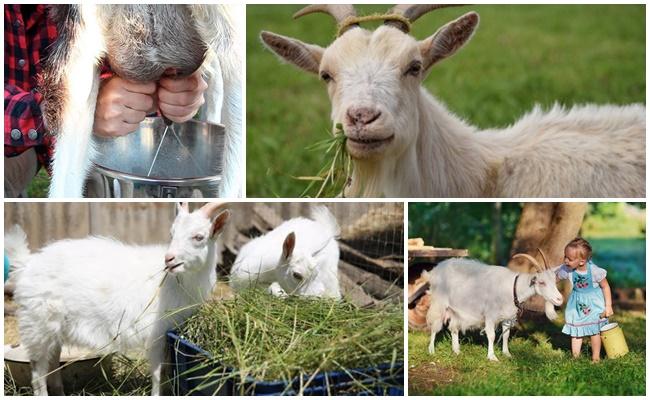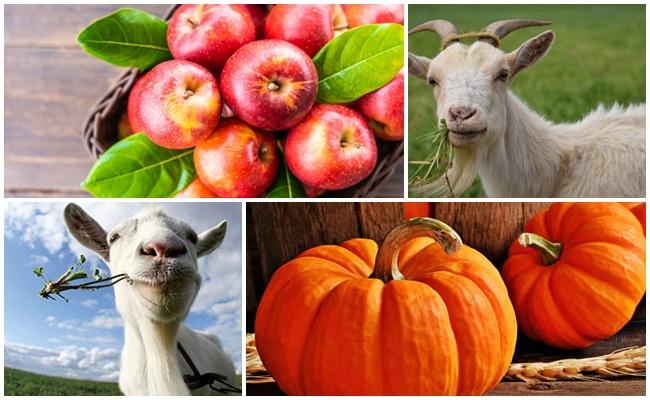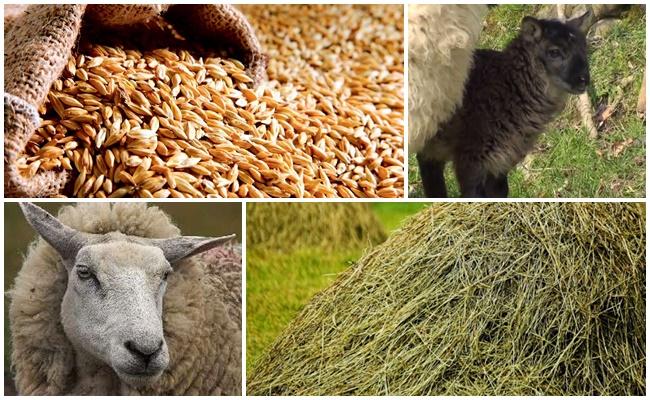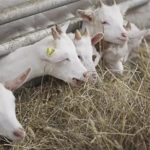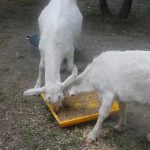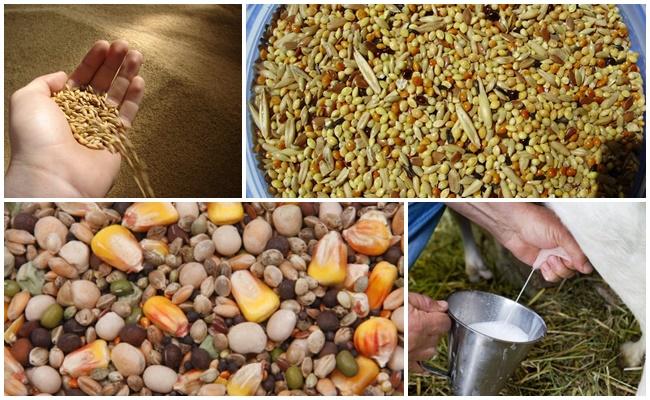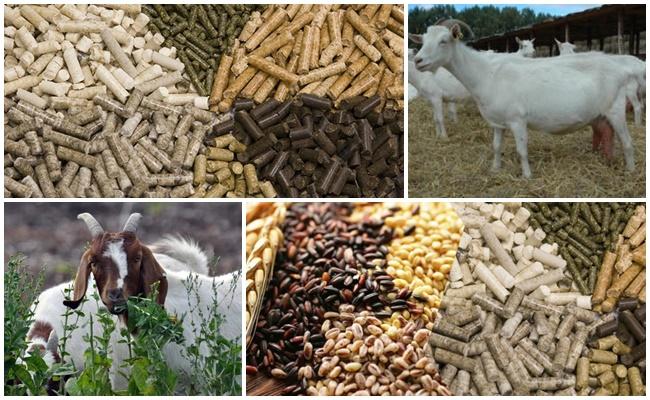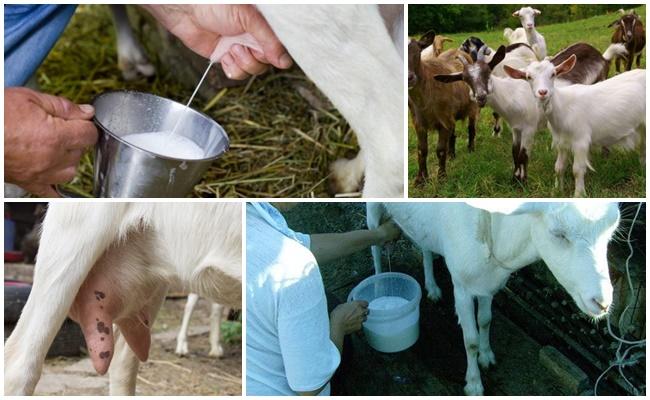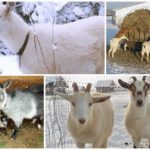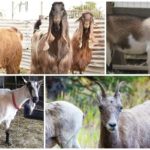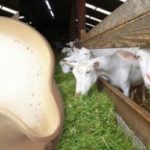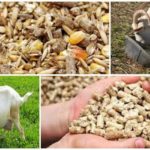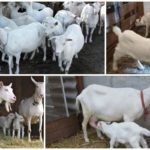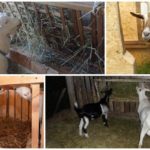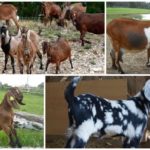Traditionally, goats are bred for milk, meat, fluff, and wool. Most often, milk and dairy products come first. To obtain it, it is advisable to purchase dairy goats. What should you do if you bought a dairy goat, but it produces less milk than a regular, non-pedigreed goat? If you know what to feed a domestic goat to increase milk yield, then it is easy to increase it by one and a half, or even twice, regardless of the breed of the animal.
What to feed goats to increase milk yield
Goats are classified as small livestock.If you create the right diet to improve milk yield, then keeping a goat will not require large physical and financial costs.
Grass
You can increase milk yield by grazing and (or) by feeding animals with cut grass. Goats happily eat grass not only in the pasture, but also when kept in stalls and get it from feeders.
The most milk-producing herbs are:
- nettle;
- pharmaceutical camomile;
- oregano;
- clover;
- alfalfa;
- coltsfoot.
The total amount of grass in the warm season should reach up to 5 kg per day per head. The grass not only increases milk yield, but also improves the taste of milk.
Juicy feed
Has a positive effect on milk yield and fat content feeding dairy goats succulent feed. These include:
- pumpkin;
- zucchini;
- fodder and sugar beets;
- Jerusalem artichoke;
- potato;
- carrot.
If possible, at home you can give animals some apples, pears, apricots and pitted plums. The fruits are washed, cut and fed to the animal in an amount of approximately 1 kg per day.
Succulent food is provided year-round, since many of them are well stored until the new harvest, and Jerusalem artichoke rhizomes can be dug directly from the ground in early spring. The amount of succulent feed per head may vary. It depends on individual preferences and the general diet of the animal. Usually they give 2-3 kg of succulent feed per day.
Roughage
To obtain a good milk yield, no goat can do without roughage. These include:
- straw;
- hay;
- twig hay.
For feeding dairy goats, it is best to use oat, barley and millet straw. Wheat straw is less digestible, and many animals simply refuse rye straw. Before giving straw, it must be chopped with a knife or chopped using a special straw cutter. Do not feed dairy goats with old straw, dusty and worn into dust.
To increase milk yield, mixed-grass meadow or forest hay is suitable. It is desirable to contain timothy, bluegrass, plantain, dandelion, red clover, and wheatgrass. Animals prefer fine hay, and it can also be chopped with a knife or passed through a special chopper. Hay should be a part of the daily diet of dairy goats at any time of the year. One goat will need about 2-3 kg of hay and straw per day.
Rough food also includes tree branches. They are harvested in the form of brooms in mid-summer. You can increase your milk yield with twig hay from:
- and you;
- linden;
- maple;
- poplars;
- birch trees
Branches cut from trees about 0.6 m long are tied into brooms, dried and fed in winter, 2-4 brooms per animal per day.
Concentrates (grain feed)
You can increase the quantity and quality of milk using concentrated grain feed. These include:
- barley;
- oats;
- wheat;
- corn;
- sunflower cake;
- soybean meal.
For better assimilation of grain, it is crushed using a special mill or grain crusher. It is important to remember that it is concentrated feed that dairy animals need as a source of protein. The amount of combined feed per head should be 300-600 g. At the beginning of lactation, the amount of concentrated feed should be greater, gradually decreasing towards the end of the milking period.
Supplements
A special swill for goats can significantly increase milk yield. It is prepared from water and crushed grains and cake. Usually take 2-3 cups of grain mixture from barley, wheat, oatmeal and pour 3.0-3.5 liters of boiling water. Stir and let cool. Then they feed it to the animal. To make the swill attractive, you can throw a handful of dried apples or berries into it and add a little salt.
Sometimes, instead of water, they add the water in which pasta and potatoes were cooked. Such water, even without additives, is an attractive drink for dairy goats.
Compound feed (recipes)
To obtain more milk, combined feeds are also used. You can buy them ready-made, or you can prepare them yourself. To increase milk yield, the second option is preferable. A recipe will help you prepare approximately 1 kg of feed, for which you need:
- rolled oats 200 g;
- wheat bran 100 g;
- feed wheat 90 g;
- table salt, 10 g;
- Sunflower meal, 100 g;
- feed yeast, 50 g;
- premix, 30 g.
Step-by-step instruction:
- Soak the yeast in 0.5 liters of water at a temperature of +32 degrees.
- Stir and let stand for a quarter of an hour.
- Combine with the crushed grain mixture and remaining ingredients and mix.
- Leave for 5-6 hours, stir the mixture once an hour.
The finished mixture is fed to goats. At home, you should not prepare such feed for future use.
High yielding breeds
The most dairy breeds include the following:
- Saanen;
- Nubian;
- Toggenburg;
- Russian;
- Nubian;
- Gorkovskaya
High lactation should not be expected from dairy goats after the first lambing. Milk yield reaches its maximum after the second or third pregnancy.
Why milk yield may fall
A drop in milk yield may be due to sedentary keeping of goats.For normal lactation, animals must move quite actively. If it is not possible to graze them, then you need to build an exercise yard near the barn.
The reasons for the decrease in milk yield can be winter frosts, when the temperature in the barn is less than +6 degrees. Sudden changes in feed and poor quality also worsen this indicator. Milk yield decreases in goats older than 8-9 years. This is due to age-related changes in the body.

